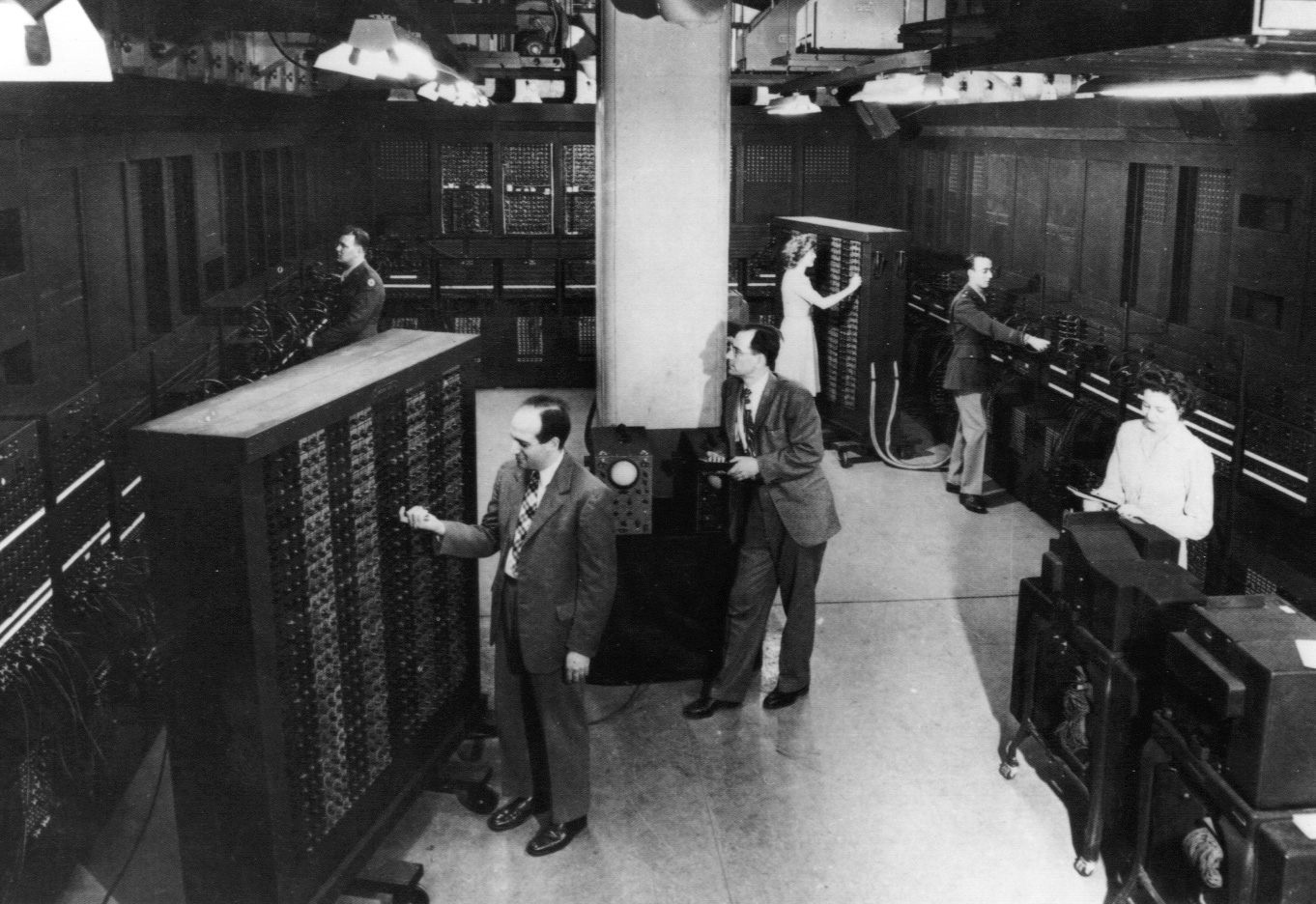Visiting ENIAC
At the University of Pennsylvania, 40 panels are on display from the forty ton ENIAC. The Electronic Numerical Integrator and Computer announced on 1946 by the New York Times is funded by the United States military. It is so large, it fills a 30′ by 50′ room. Designed to calculate missile trajectories, it could calculate 5,000 instructions per second. For reference, the modern iPhone X weighs 0.3836 pounds and can calculate up to 600 billion instructions per second. Despite that difference in computational power, the ENIAC is very impressive for the time and later was used in the development of the hydrogen bomb. Both men and women contributed to the ENIAC, however, mostly only the men were featured in the media at that time.

Readdressing History
Luckily, several institutions including the University of Pennsylvania have made efforts recently to acknowledge these women. The six most remarkable women were: Kathleen McNulty Mauchly Antonelli, Jean Jennings Bartik, Frances (Betty) Snyder Holberton, Marlyn Wescoff Meltzer, Frances Bilas Spence, and Ruth Lichterman Teitelbaum. These women were thought of as operators although their tasks were arduous, technical, and creative. These tasks include plugging in cables, setting switches, and partnering with scientists to write programs executed by punch cards.
The term “operator” downplays their role and hides the need to see beyond abstractions. They were enrolled in or recently graduated from Universities with relevant coursework degrees and chosen for their competence. The devaluation of women is reflected in society and can be observed surfacing on an individual level. In an interview with Jean Bartik she quotes Betty Holberton to say: “Look like a girl, act like a lady, think like a man, and work like a dog.” Even though this piece of advice for women at the time is said with humor and self awareness, it is still telling.
Certainly there are many brilliant men that are worth admiring, but what of the many female academic role models. It is important to recognize the accomplishments of women in order to inspire more young minds to visualize themselves contributing to the next technological advancement.
Acknowledgements
- “ENIAC at Penn Engineering.” Penn Engineering, 2017, https://www.seas.upenn.edu/about/history-heritage/eniac/.
- Guru, iPhone. “IPhone X as the Sum of Technologies: IGotOffer.” IGotOffer Blog, 5 Nov. 2017, https://igotoffer.com/blog/iphone-x-sum-technologies#:~:text=This%20is%20reportedly%20the%20AI,second%20for%20real%2Dtime%20processing.
- Hines, Nickolaus. “The World’s First Computer Was Bigger than a T-Rex and 5 Million Times Weaker than an IPhone.” All That’s Interesting, All That’s Interesting, 9 Mar. 2016, https://allthatsinteresting.com/first-computer.
- Jones, Brad, and Luke Larsen. “Long before Gates or Jobs, 6 Women Programmed the First Digital Computer.” Digital Trends, Digital Trends, 1 Mar. 2019, https://www.digitaltrends.com/computing/remembering-eniac-and-the-women-who-programmed-it/.
